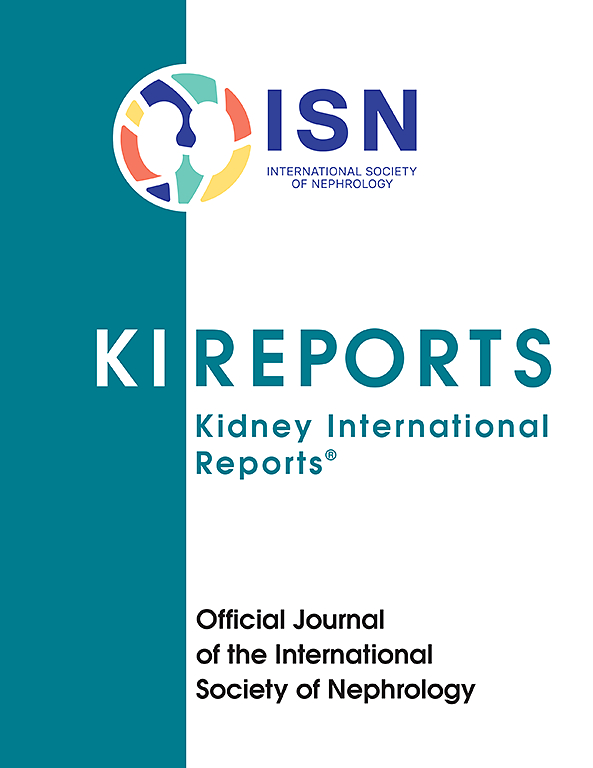农业社区不明病因慢性肾病国际前瞻性研究的基本原理和设计
IF 5.7
2区 医学
Q1 UROLOGY & NEPHROLOGY
引用次数: 0
摘要
一种病因不明的慢性肾脏疾病(CKD)的发病率出现了惊人的增长,主要影响中美洲和南亚从事农业活动的年轻人。尽管在过去20年里进行了广泛的研究,但原因仍不清楚。该病的特点是肾功能进行性丧失,并无大量蛋白尿和血尿。农业社区不明病因CKD国际前瞻性研究(CURE研究)的目的是:(i)在不明病因CKD (CKDu)患者或有风险的个体中确定与肾功能下降相关的因素;(ii)更好地表征CKDu患者的临床表型,并将其与其他形式的CKD区分开来;(iii)采用先进的实验室和数据分析方法,开展与风险因素、生物标志物和因果机制相关的科学发现;(四)建立生物信息库,为今后的研究做准备。CURE研究是一项前瞻性队列研究,来自中美洲和印度7个地点的3600名参与者,年龄18至45岁,估计肾小球滤过率(eGFR)≥20ml /min / 1.73 m2,无糖尿病证据,无其他已知CKD原因。在每8个月的4次访问中收集参与者的生物样本和问卷数据。血液、尿液和头发将被分析肾脏功能生物标志物、微量元素、农药和其他污染物、非靶向代谢组学和基因分析。从一部分研究参与者中收集的环境样本将分析微量元素、农用化学品和燃烧暴露。结论本研究将为不同地域的CKDu病因和临床表型提供新的信息。本文章由计算机程序翻译,如有差异,请以英文原文为准。
Rationale and Design of the International Prospective Study of CKD of Uncertain Etiology in Agricultural Communities
Introduction
There has been an alarming increase in the incidence of a chronic kidney disease (CKD) of unknown etiology primarily affecting young individuals engaged in agricultural activities in Mesoamerica and South Asia. Despite extensive research over the past 2 decades, causes remain unclear. The disease is characterized by progressive loss of kidney function with the absence of heavy proteinuria and hematuria. The International Prospective Study of CKD of Unknown Etiology in Agricultural Communities (CURE study) aims to do the following: (i) identify factors associated with kidney function decline among individuals with or at risk for CKD of uncertain etiology (CKDu); (ii) better characterize the clinical phenotypes of individuals with CKDu and differentiate them from other forms of CKD; (iii) employ advanced laboratory and data analysis methods to conduct discovery science related to risk factors, biomarkers, and causal mechanisms; and (iv) establish a biorepository for future research.
Methods
The CURE study is a prospective cohort study of up to 3600 participants from 7 sites in Central America and India aged 18 to 45 years with estimated glomerular filtration rate (eGFR) ≥ 20 ml/min per 1.73 m2, no evidence of diabetes, and no other known causes of CKD. Biological samples and questionnaire data are collected from participants during 4 visits at 8-month intervals.
Results
Blood, urine, and hair will be analyzed for kidney function biomarkers, trace elements, pesticides and other contaminants, untargeted metabolomics, and genetic assays. Environmental samples, collected from a subset of study participants, will be analyzed for trace elements, agrochemicals, and burning exposures.
Conclusion
This study will provide novel information about CKDu etiology and clinical phenotypes across distinct geographies.
求助全文
通过发布文献求助,成功后即可免费获取论文全文。
去求助
来源期刊

Kidney International Reports
Medicine-Nephrology
CiteScore
7.70
自引率
3.30%
发文量
1578
审稿时长
8 weeks
期刊介绍:
Kidney International Reports, an official journal of the International Society of Nephrology, is a peer-reviewed, open access journal devoted to the publication of leading research and developments related to kidney disease. With the primary aim of contributing to improved care of patients with kidney disease, the journal will publish original clinical and select translational articles and educational content related to the pathogenesis, evaluation and management of acute and chronic kidney disease, end stage renal disease (including transplantation), acid-base, fluid and electrolyte disturbances and hypertension. Of particular interest are submissions related to clinical trials, epidemiology, systematic reviews (including meta-analyses) and outcomes research. The journal will also provide a platform for wider dissemination of national and regional guidelines as well as consensus meeting reports.
 求助内容:
求助内容: 应助结果提醒方式:
应助结果提醒方式:


